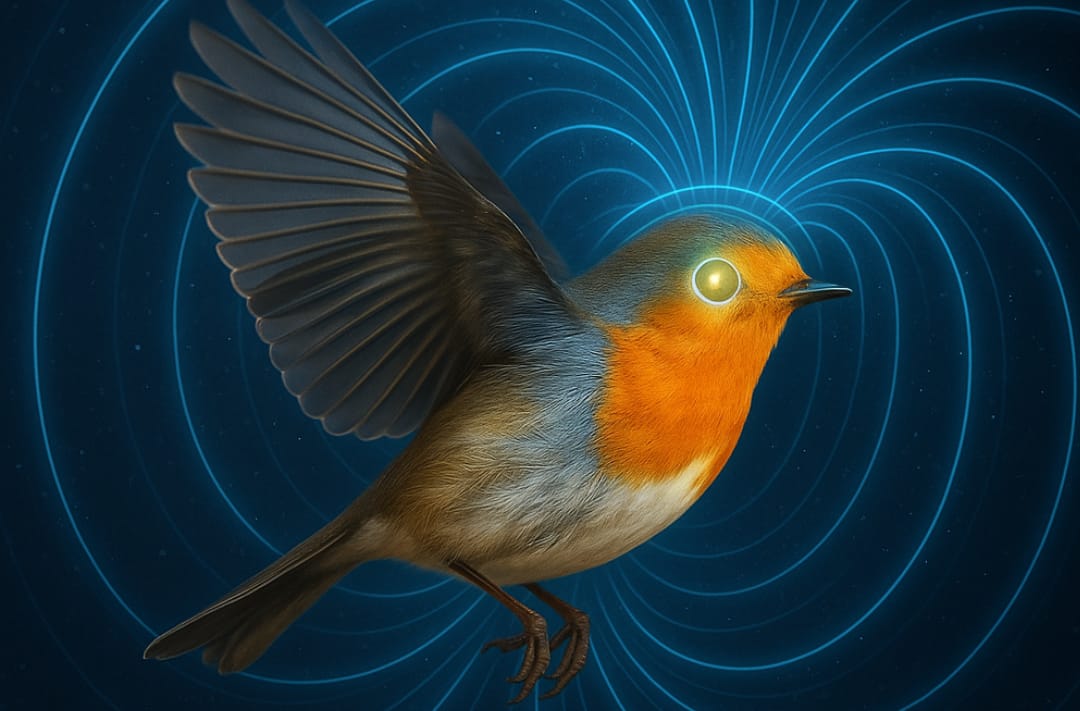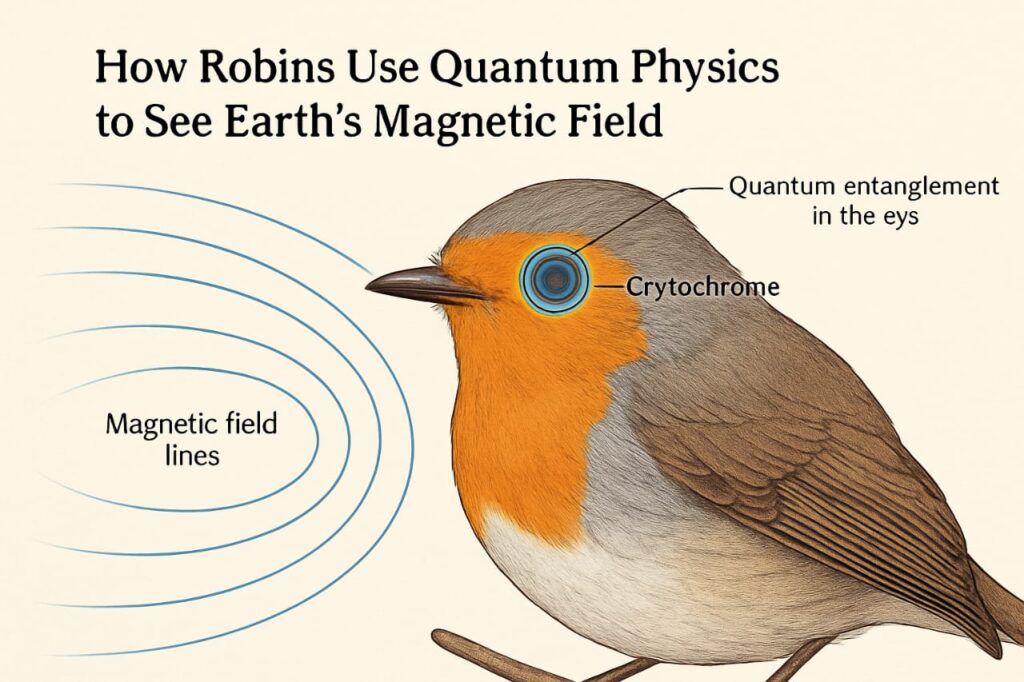The European robin, a small migratory songbird with its iconic orange-red chest, has become one of science’s most fascinating examples of nature’s hidden technologies.
Researchers have discovered that this bird can literally perceive Earth’s magnetic field, helping it navigate across vast distances during migration. This astonishing ability stems from a light-sensitive protein in its eyes called cryptochrome, which is believed to form quantum-entangled pairs of electrons.

When light hits the robin’s eye, these entangled electrons react differently depending on the bird’s orientation to Earth’s magnetic field,allowing it to “see” magnetic lines as a sort of visual overlay.
This process, known as the quantum compass, is one of the rare examples of quantum mechanics operating within a living organism. Unlike mechanical or instinctive navigation alone, the robin’s visual system actually processes magnetic information in real time, creating a kind of sixth sense.

“The evidence is pointing to a genuine quantum effect playing a role in bird navigation,” said Dr. Peter Hore, a chemist at the University of Oxford.
Another expert, Dr. Henrik Mouritsen, a biologist at the University of Oldenburg, added, “It’s almost like the birds have a heads-up display, an internal compass they can see with their eyes.” This remarkable fusion of physics and biology continues to intrigue scientists and deepen our appreciation for the unseen wonders of the animal world.






